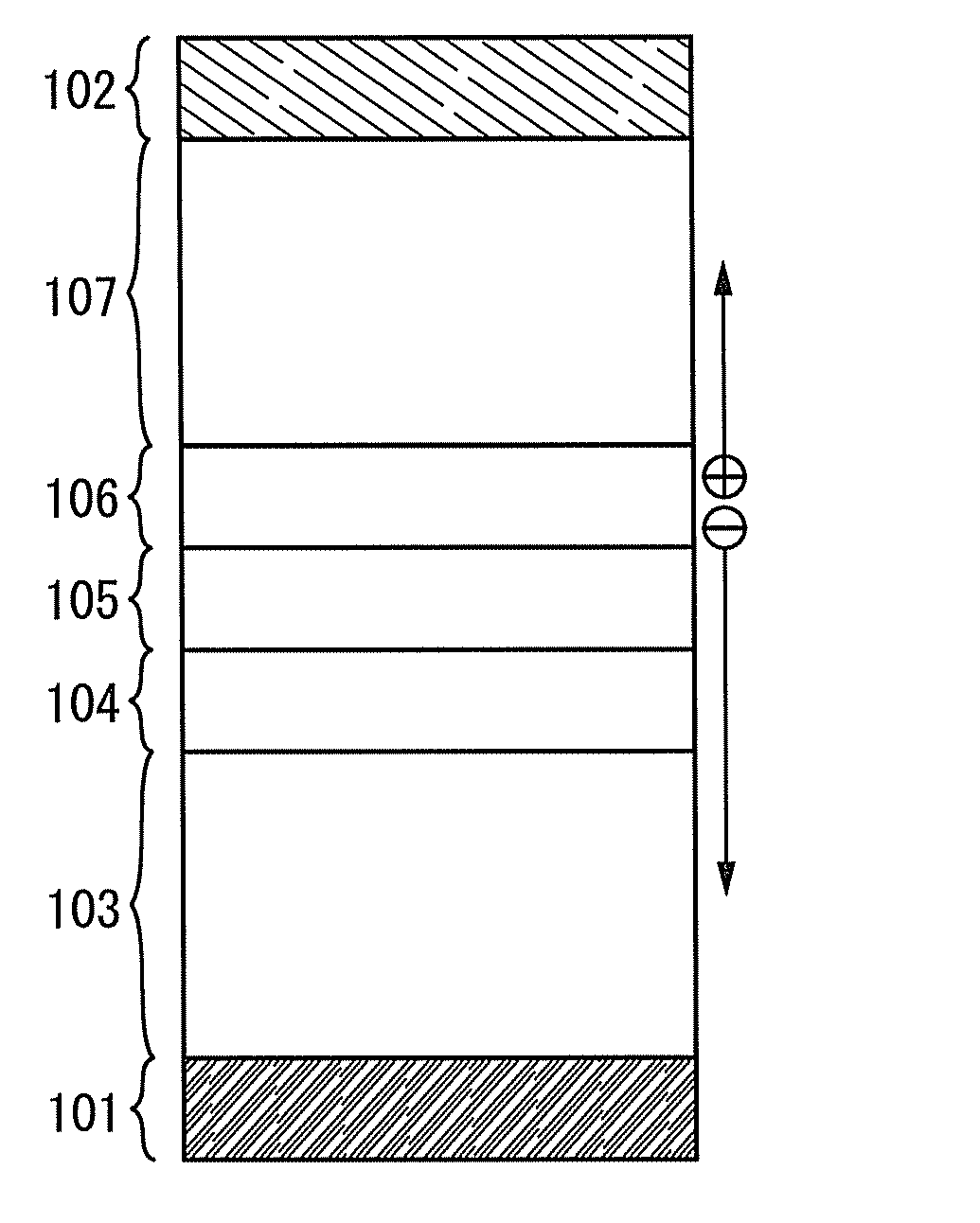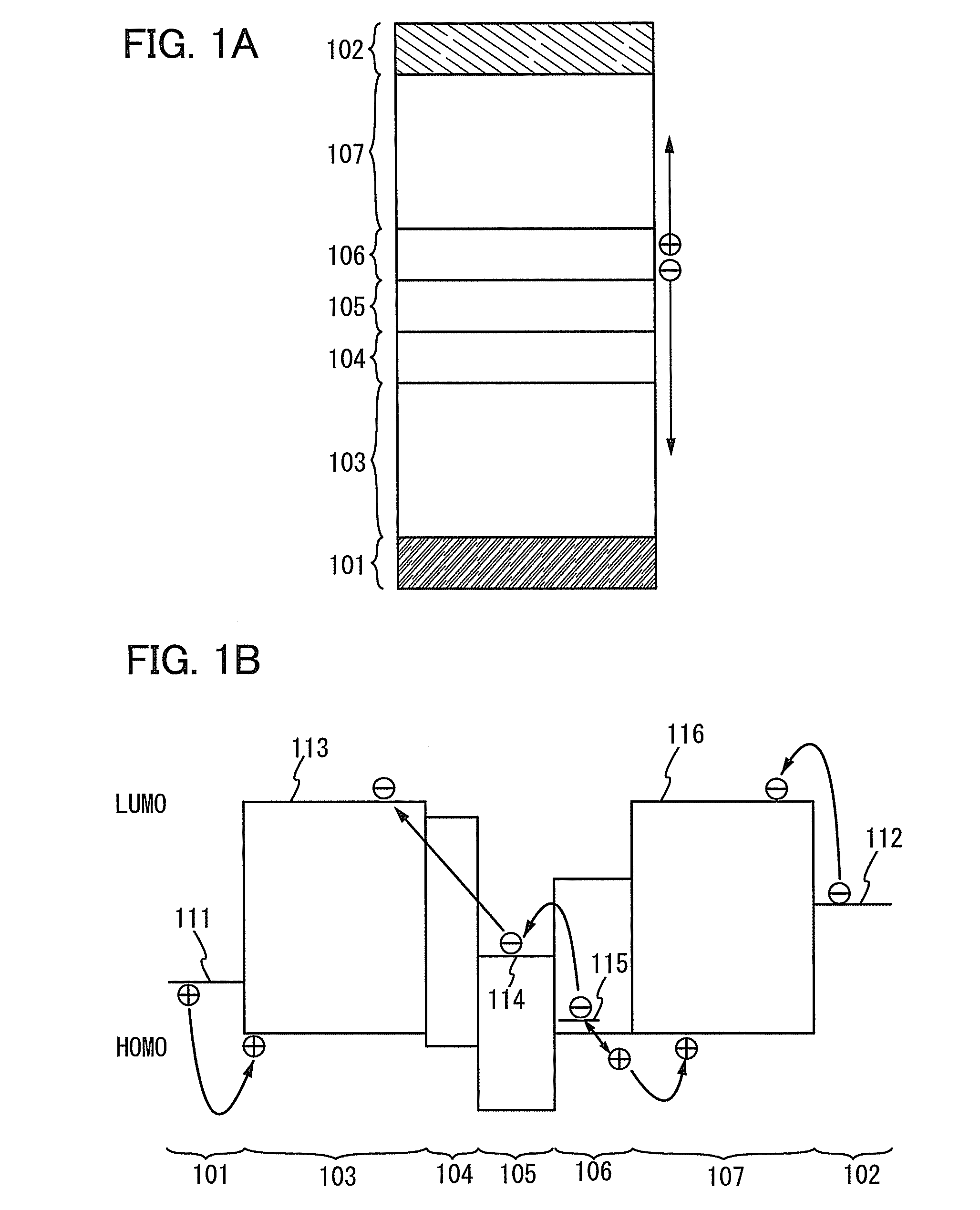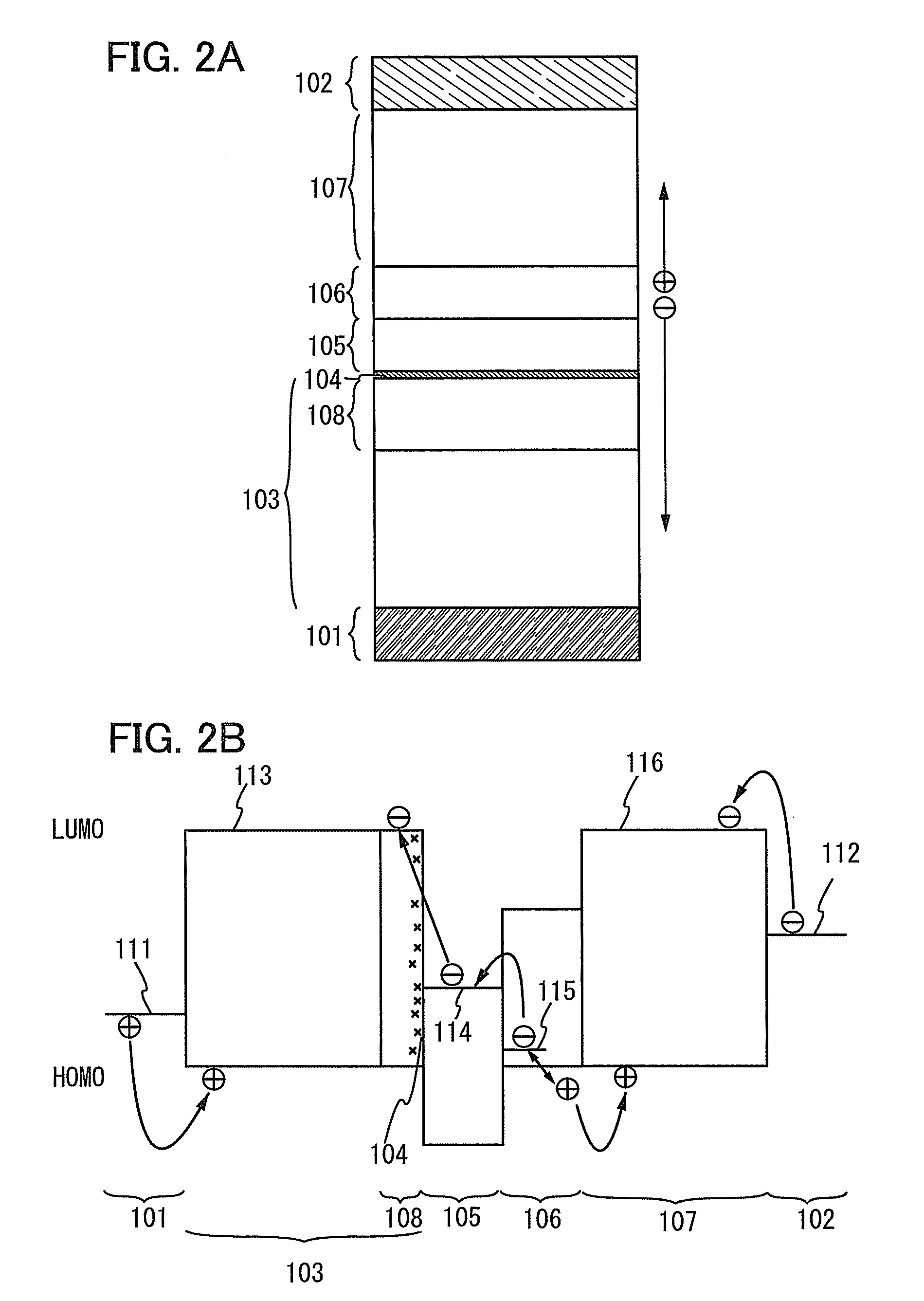Light-Emitting Element, Light-Emitting Device, Lighting Device, and Electronic Device
- Summary
- Abstract
- Description
- Claims
- Application Information
AI Technical Summary
Benefits of technology
Problems solved by technology
Method used
Image
Examples
embodiment 1
[0042]In Embodiment 1, one embodiment of a light-emitting element will be described with reference to FIGS. 1A and 1B.
[0043]In an element structure illustrated in FIG. 1A, a first EL layer 103 and a second EL layer 107 each including a light-emitting region are interposed between a pair of electrodes (i.e., an anode 101 and a cathode 102), and between the first EL layer 103 and the second EL layer 107, an electron-injection buffer 104, an electron-relay layer 105, and a charge-generation layer 106 are stacked in this order over the anode 101.
[0044]The charge-generation layer 106 is a layer containing a substance having high hole-transport properties and an acceptor substance, where holes and electrons that are carriers of the light-emitting element are generated. The holes generated in the charge-generation layer 106 move to the second EL layer 107 while the electrons move to the electron-relay layer 105. Moreover, since the electron-relay layer 105 has high electron-transport prope...
embodiment 2
[0104]In Embodiment 2, an example of the light-emitting element included in the basic structure described in Embodiment 1 will be described with reference to FIGS. 2A and 2B. Specifically, a case where the electron-injection buffer 104 in the light-emitting element described in Embodiment 1 has a single layer of an alkali metal, an alkaline earth metal, a rare earth metal, or a compound thereof will be described.
[0105]As illustrated in FIG. 2A, in a light-emitting element described in this embodiment, the first EL layer 103 and the second EL layer 107 each including a light-emitting region are interposed between a pair of electrodes (i.e., the anode 101 and the cathode 102), and between the first EL layer 103 and the second EL layer 107, the electron-injection buffer 104, the electron-relay layer 105, and the charge-generation layer 106 are stacked in this order over the anode 101.
[0106]The anode 101, the cathode 102, the first EL layer 103, the second EL layer 107, the charge-gener...
embodiment 3
[0112]In Embodiment 3, an example of the light-emitting element included in the basic structure described in Embodiment 1 will be described with reference to FIGS. 3A and 3B. Specifically, a case where the electron-injection buffer 104 in the light-emitting element described in Embodiment 1 contains a substance having high electron-transport properties and a donor substance.
[0113]As illustrated in FIG. 3A, in a light-emitting element described in this embodiment, the first EL layer 103 and the second EL layer 107 each including a light-emitting region are interposed between a pair of electrodes (i.e., the anode 101 and the cathode 102), and between the first EL layer 103 and the second EL layer 107, the electron-injection buffer 104, the electron-relay layer 105, and the charge-generation layer 106 are stacked in this order over the anode 101. In addition, the electron-injection buffer 104 contains a substance having high electron-transport properties and a donor substance.
[0114]Not...
PUM
 Login to View More
Login to View More Abstract
Description
Claims
Application Information
 Login to View More
Login to View More - Generate Ideas
- Intellectual Property
- Life Sciences
- Materials
- Tech Scout
- Unparalleled Data Quality
- Higher Quality Content
- 60% Fewer Hallucinations
Browse by: Latest US Patents, China's latest patents, Technical Efficacy Thesaurus, Application Domain, Technology Topic, Popular Technical Reports.
© 2025 PatSnap. All rights reserved.Legal|Privacy policy|Modern Slavery Act Transparency Statement|Sitemap|About US| Contact US: help@patsnap.com



